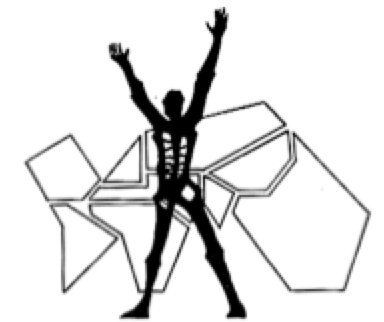Order Polity
An Experiment in Corporate DecisionmakingSince its founding in 1968 and incorporation in 1973, the Order was driven by a mission of building “Primal Community” in an effort to “awaken every human being across the globe to his and her full humanness.” This mission required both fidelity to the “historical church” in the way of religious studies and care of religious houses, and social projects that “dramatize need” similar to the ICA’s work in the 5th City.
The Order utilized members in a number of different capacities and roles to apply their mission to sociological models: as researchers, trainers, and “operationists” of communal modes. (Brief History of the O:E)
Exactly how the Order went about spreading and fulfilling its mission on a global scale spoke to it and the Institute’s prioritization of economics, politics, and culture, both within and beyond the organization.
Economic: The Order’s first concern was assisting communities with organizing material and human resources. Essential to this task was the fostering of cadres and guilds in the United States and abroad. Guilds were facilities and sites of operation funded by the Order and designed to serve as places of meeting, housing, and food in the communities they serve. The “local” nature of these guilds were crucial to their function, as the development and utilization of local cadres or membership was essential for their perpetuation. With these cadres assembled, the guilds enacted research to identify local leaders and the thrust of the local movement, training and consultation to identify political, social, and economic priorities and concerns, as well as enabling participation in the way of meetings, conferences, and events in a parliamentarian capacity. As a result, communities from Chicago to Sydney Australia created plans ranging from a single year to forty years, staking out the strengths, concerns, and priorities regional, national, and global. In so doing, the Order operated on the basis of “permeating” communities of varying scale and depth to help inculcate “humanness” at levels micro and macro. (Permeation and Dissemination)
Panchayat Reports
-
Global Panchayat Trek Report, June 10, 1975, Marianna Bailey
-
Issues of Polity and Polity Triangles of Community, Joseph Mathews, December 12, 1969
Internal Life Guides
-
India: Nava Gram Prayas, Quarter II 1978-1979
-
United States:
-
Chicago Nexus: 1981-1982; Morning and Evening 1979-1980; 1978-1979 (plus Supplement); 1977-1978; 1976-1977; Quarter II 1975-1976
-
Chicago Religious House in 5th City: 1979-1980, 1978-1979; 1974-1975 Quarter II, Quarter III, Quarter IV; 1973-1974 Quarter II, Quarter III, Quarter IV
-
Political. The “political” arm of the Order, in contrast, turned on the marrying of traditions of religious training and scholarship with its 20th century mission of activating and innervating community abroad. An essential element of these works of “polity” was the dissemination of religious houses and priors, in conjunction with what was called the “Global Panjayat.” As Joseph Slicker put it, these programs were structures that could serve as a test of the “glue” that keeps societies together. (Global Order Polity) Put another way, the polity efforts of the Order served as an experiment to address “the contradiction blocking the formation of an inclusive polity structure applicable on any level of society.” (Collection of Brief Essays on the Dynamics of Order Polity)
The Panchayat was an experiment in global polity (1978 to 1988) intended to identify global issues and plan how to address them. It was envisioned that the Panjayat would pull together the reflections, curriculum, and work of past Global Research Assemblies for achieving a polity to address political and cultural changes of that decade. (Order Polity: the Experiment of the Eighties). This work required “regional consults” to check in with the local work of the 54 different regions serviced at the time. Reports published in 1978-1979 noted a readiness of many communities around the world for the community development work ICA was conducting, but indicated a lack of regularity in pedagogical tools such as “spirit methods.” Working groups moved to expand leadership recruitment, and offer more programs such as Global Women’s Forums, Community Youth Forums, and LENS courses.(Panjayat Working Notes)
Like the Institute of Cultural Affairs, the Order also highly prioritized culture and fellowship amongst its ranks. Community life, in the way of how decisions were made within the order, worshipping practices, and everyday life, featured heavily into this. Daily worship, or “daily offices,” as they were called, was the “primal symbolic activity” by which the community within the Order was called “once again to consciousness.” (Symbolic Life of the Order) These internal activities fell in line with the Order’s prioritization of the “New Religious Mode” from 1968 onwards, a new system by which values of poverty, chastity, and obedience were conceptualized along religious and human spiritual lines of thought. At the same time, Global “Odysseys” were conducted from 1970 to 1975 to visit the areas served by the Order around the world in order to evaluate the cultural “signs” (or identities), general operating concepts, and “fears” of different communities. In other words, even the interior life and cultural concerns of the Order fell in line with the mission of helping to form a global-minded citizenship and polity. (Global Odyssey, My Journey)
In the end, the 1980s – a time that the Order identified as a period of great transition in their methods and challenges – marked the end of the Order, itself. In November, 1988, the structures of the Order Ecumenical and the family order system were “called out of being” at the Global Conference in Oaxtapec, Mexico, partly a result of the Institute’s turn to decentralizing and reorganizing its own programs and priories. That is not to say that the work of the order ceased, as the Institute would continue to offer courses and training that arose from the work of the Order and its houses in its existence.
-
Order Polity: The Experiment of the 1980s, April 25, 1981
-
Corporate Decision Making, Joseph Mathews, July 1975
-
Global Polity Creation, Charles Moore
